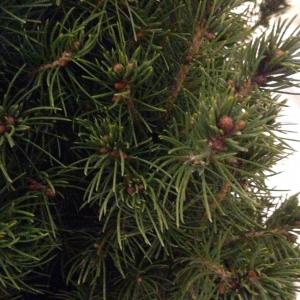文章
Miss Chen
2017年11月29日

Bitterweed is an annual wildflower from the aster family that frequently infests pastures, sandy ground, prairies and disturbed sites. The weedy plant has a mature height of ½ to 2 ½ feet and blooms with small, five to 10 petaled yellow flowers. Bitterweed gets its name from its bitter, toxic foliage that gives cow milk a bitter taste if grazed. Greater quantities of foliage ingestion can kill domesticated farm animals and horses. You can kill bitterweed in pastures with the use of 2, 4-D herbicide, as recommended by the Mississippi State University Extension.

Step 1
Apply the herbicide to young, active growing weeds for best control. Younger plants are more effectively controlled than the more mature ones.
Step 2
Check that the weeds have at least two true leaves before you start treatment. If the weeds do not have true leaves, the effect of the herbicide is reduced.
Step 3
Mix herbicide at the rate of 1 to 2 pints for every 10 to 20 gallons of water. Fill the sprayer with herbicide solution.
Step 4
Spray all weed plants evenly at the recommended rate of 20 gallons per acre. Do not use a low spray volume, as this usually does not provide coverage adequate to kill the weed.

Step 5
Do not treat pastures that are severely drought stressed. Also, do not use the herbicide on pastures of annual legumes until after the production of seed.

Step 1
Apply the herbicide to young, active growing weeds for best control. Younger plants are more effectively controlled than the more mature ones.
Step 2
Check that the weeds have at least two true leaves before you start treatment. If the weeds do not have true leaves, the effect of the herbicide is reduced.
Step 3
Mix herbicide at the rate of 1 to 2 pints for every 10 to 20 gallons of water. Fill the sprayer with herbicide solution.
Step 4
Spray all weed plants evenly at the recommended rate of 20 gallons per acre. Do not use a low spray volume, as this usually does not provide coverage adequate to kill the weed.

Step 5
Do not treat pastures that are severely drought stressed. Also, do not use the herbicide on pastures of annual legumes until after the production of seed.
0
0
Gerald Pitter
2017年11月23日

Anyone know what this is? I thought it might be lavender as i thre dome seeds down a while ago. Bees come for the purple flowers
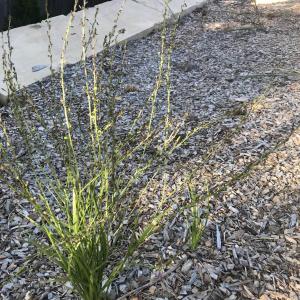

0
0
Mr.Snow:Sorry, it is not lavender. See if your county extension can ID this pretty monocot.
文章
Miss Chen
2017年11月05日

Blueberries have a higher antioxidant capacity than any other fruit, earning them a place on your table and in your home garden. Blueberry bushes start with vessel-shaped flowers during the first part of spring and then form berries progressing in shades from green and pink to blue and purple. Since blueberries grow in clusters, not all of the berries will ripen at the same time. In fact, you can have one cluster containing both green and ripe fruit. Unlike some fruits, blueberries will not ripen after you pick them, so you must wait until the berries fully ripen before harvesting.

Step 1
Examine the cluster of blueberries. The blueberries will be ripe when they are completely blue in color, from the stem end to the calyx end. The calyx is the outer cap of the blueberry opposite the stem. If the blueberries have green or red near the stem end, do not pick them yet.
Step 2
Press the blueberries between your fingers -- ripe blueberries feel firm to the touch, rather than soft or mushy.
Step 3
Taste your blueberries for ripeness. Ripe blueberries taste sweet; unripe blueberries will not have much flavor or sweetness.

Step 4
Harvest your blueberry bushes in the months of June through August, since blueberries ripen during this time. You will need to harvest the same bushes repeatedly since blueberries ripen in bursts.

Step 1
Examine the cluster of blueberries. The blueberries will be ripe when they are completely blue in color, from the stem end to the calyx end. The calyx is the outer cap of the blueberry opposite the stem. If the blueberries have green or red near the stem end, do not pick them yet.
Step 2
Press the blueberries between your fingers -- ripe blueberries feel firm to the touch, rather than soft or mushy.
Step 3
Taste your blueberries for ripeness. Ripe blueberries taste sweet; unripe blueberries will not have much flavor or sweetness.

Step 4
Harvest your blueberry bushes in the months of June through August, since blueberries ripen during this time. You will need to harvest the same bushes repeatedly since blueberries ripen in bursts.
0
0
成长记
Ueca
2017年10月31日

I see a shoot of some kind. Is it flowers or is it an offshoot? I suppose we'll find out in a few weeks.
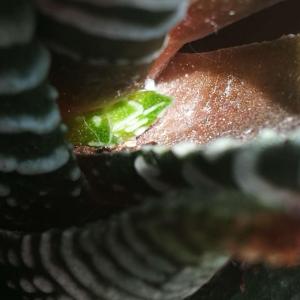
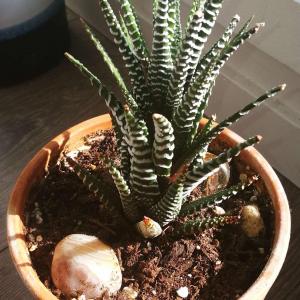


4
1
Yaddie
2017年10月24日

What type of flowers are these


0
0
Kiersten_27:Sunflowers, zinnias, and wild violets are what I can identify
求助
kkiln
2017年10月12日

What is the name of this flower. It has long long stems and tiny red/pink flowers. The stems look like long wild grass .


0
0
sunnyzou:Gaura lindheimeri Engelm. et Gray
求助
Erica Evans
2017年10月10日

any idea what this is? it was labelled as a jade when I bought it, but it grew into....vines. now some.of them have tiny white flowers






1
0
Cristel:Tricolor Wax Plant
Hoya carnosa 'Variegata'
This easy to grow houseplant has green leaves variegated with white and pink.
Cristel:It looks like it could be a Wax plant of the Hoya family.
Ueca:If this is Crassula sarmentosa, then it makes sense that it's so long.
家苗铭凯:太阳花锦,徒长了多晒太阳
文章
Dummer. ゛☀
2017年10月08日

Bleeding heart has attractive mounded foliage with arching stems of delicate, heart-shaped flowers in spring. It thrives in moist woodland gardens along with ferns and other shade-lovers.

About bleeding hearts
Bleeding heart grows best in cool, moist conditions. Flower colors include yellow, pink, red, and white. It blooms in spring and may rebloom sporadically throughout the summer in cool areas. Height ranges from 6 inches to 2 feet, depending on variety.
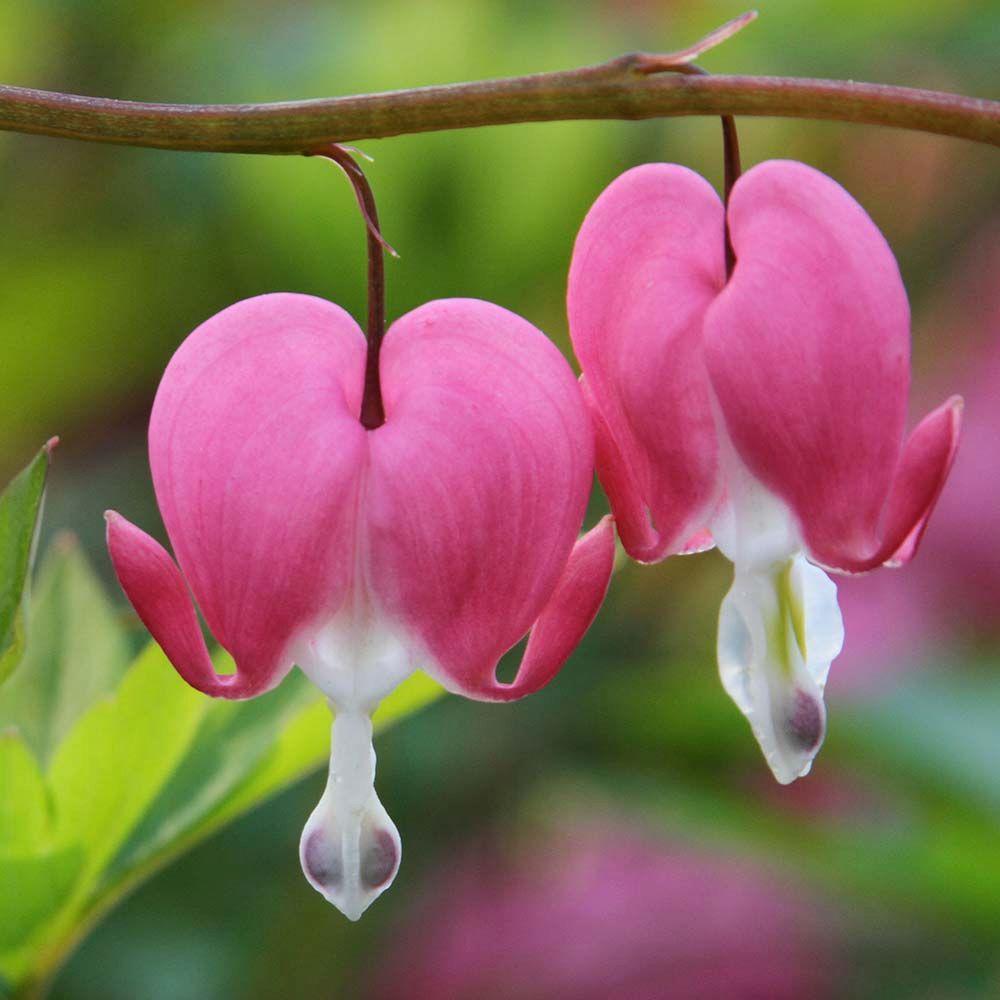
Choosing a site to grow bleeding hearts
Select a site with light to medium shade and well-drained soil that is rich in organic matter.
Special features of bleeding hearts
Deer resistant
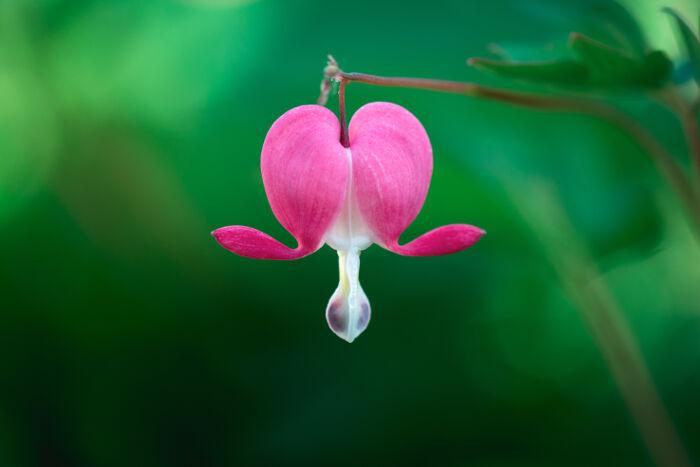
Ongoing Care
Apply a thin layer of compost each spring, followed by a 2-inch layer of mulch to retain moisture and control weeds. Water plants during the summer if rainfall is less than 1 inch per week. After the first killing frost, cut stems back to an inch or two above soil line.

About bleeding hearts
Bleeding heart grows best in cool, moist conditions. Flower colors include yellow, pink, red, and white. It blooms in spring and may rebloom sporadically throughout the summer in cool areas. Height ranges from 6 inches to 2 feet, depending on variety.

Choosing a site to grow bleeding hearts
Select a site with light to medium shade and well-drained soil that is rich in organic matter.
Special features of bleeding hearts
Deer resistant

Ongoing Care
Apply a thin layer of compost each spring, followed by a 2-inch layer of mulch to retain moisture and control weeds. Water plants during the summer if rainfall is less than 1 inch per week. After the first killing frost, cut stems back to an inch or two above soil line.
2
1
文章
Dummer. ゛☀
2017年10月08日

If you're looking for a perennial with a long season of bloom, blanket flower (Gaillardia x grandiflora) is a great choice. The daisy-like flowers are produced from early summer to early fall in shades of orange, red and yellow, adding sizzle to the garden and attracting nectar-seeking butterflies.
About blanket flowers
Produced above a clump of hairy, narrow, gray-green leaves, the blossoms of perennial blanket flower have petals that may be solid colored shades of yellow, wine red , orange or peach, or may be banded in combinations of red or orange with yellow. The petals of some are frilled, while others have a unique, tubular shape. Sizes range from 10-12 inch high dwarfs to selections as tall as 24-30 inches. All are easy care plants with few insect or disease problems and most are hardy in zones 3-9.
There is also an annual blanket flower (Gaillardia pulchella) that is easy to grow from seed. Start seeds early indoors 4-6 weeks before the last spring frost, transplanting to the garden when the weather has warmed. In warm-winter areas, sow seeds directly in late fall or very early spring. Varieties are available with single, double and semi-double flowers.

Special features of blanket flowers
Besides attracting butterflies, blanket flowers can be grown in containers and the taller cultivars make nice cut flowers. Here are some popular cutivars of the perennial Gaillardia x grandiflora:
Gaillardia 'Ariziona Sun' This 8-10 inch high variety sports masses of bright orange-red blossoms tipped with yellow on a dwarf plant.
Gaillardia 'Fanfare' Unusual, trumpet-shaped petals of deep red tipped with yellow on a 14 inch high plant surround a burnt orange center.
Gaillardia 'Tokajer' With marmalade-orange flowers that shade subtly to peach at the tips, this 2 foot tall variety may need staking.
Gaillardia 'Burgundy' As its name suggests, this variety bears large, 3 inch wide wine-red blossoms on a 24-30 inch tall plant.
Gaillardia 'Oranges and Lemons' This variety offers softer colors than other blanket flowers, with peach-colored, yellow-tipped blossoms with gold central cones on a 2 foot tall plant. Hardy in zones 5-9.
Choosing a site to grow blanket flowers
Full sun and very well-drained soil are musts for blanket flowers to thrive. They prefer loose, sandy soil that isn't overly fertile with a pH near neutral or slightly alkaline. Established plants are quite drought tolerant.

Planting Instructions
Container grown plants can be set out throughout the growing season, but spring or fall planting is ideal. Space dwarf cultivars about a foot apart; taller varieties should be set about 18 inches apart. Prepare the garden bed by using a garden fork or tiller to loosen the soil to a depth of 12 to 15 inches, then mix in a 2- to 4-inch layer of compost. Dig a hole twice the diameter of the pot the plant is in. Carefully remove the plant from its container and place it in the hole so the top of the root ball is level with the soil surface. Carefully fill in around the root ball and firm the soil gently. Water thoroughly.

Ongoing Care
Deadhead plants regularly to encourage more flowering. Blanket flowers are often relatively short-lived. Cutting back clumps to 6 inches in late summer often increases their chances of winter survival. You can also keep your plants vigorous by dividing them every 2-3 years in spring or early fall. Water newly set out or divided plants regularly until they become established. Blanket flowers have few insect or disease problems. Watch for aphids and leafhoppers that can spread a virus-like disease called aster yellows. Control insects with insecticidal soap, if needed, and destroy any plants that are stunted with flowers that remain green, as these are infected with aster yellows.
About blanket flowers
Produced above a clump of hairy, narrow, gray-green leaves, the blossoms of perennial blanket flower have petals that may be solid colored shades of yellow, wine red , orange or peach, or may be banded in combinations of red or orange with yellow. The petals of some are frilled, while others have a unique, tubular shape. Sizes range from 10-12 inch high dwarfs to selections as tall as 24-30 inches. All are easy care plants with few insect or disease problems and most are hardy in zones 3-9.
There is also an annual blanket flower (Gaillardia pulchella) that is easy to grow from seed. Start seeds early indoors 4-6 weeks before the last spring frost, transplanting to the garden when the weather has warmed. In warm-winter areas, sow seeds directly in late fall or very early spring. Varieties are available with single, double and semi-double flowers.

Special features of blanket flowers
Besides attracting butterflies, blanket flowers can be grown in containers and the taller cultivars make nice cut flowers. Here are some popular cutivars of the perennial Gaillardia x grandiflora:
Gaillardia 'Ariziona Sun' This 8-10 inch high variety sports masses of bright orange-red blossoms tipped with yellow on a dwarf plant.
Gaillardia 'Fanfare' Unusual, trumpet-shaped petals of deep red tipped with yellow on a 14 inch high plant surround a burnt orange center.
Gaillardia 'Tokajer' With marmalade-orange flowers that shade subtly to peach at the tips, this 2 foot tall variety may need staking.
Gaillardia 'Burgundy' As its name suggests, this variety bears large, 3 inch wide wine-red blossoms on a 24-30 inch tall plant.
Gaillardia 'Oranges and Lemons' This variety offers softer colors than other blanket flowers, with peach-colored, yellow-tipped blossoms with gold central cones on a 2 foot tall plant. Hardy in zones 5-9.
Choosing a site to grow blanket flowers
Full sun and very well-drained soil are musts for blanket flowers to thrive. They prefer loose, sandy soil that isn't overly fertile with a pH near neutral or slightly alkaline. Established plants are quite drought tolerant.

Planting Instructions
Container grown plants can be set out throughout the growing season, but spring or fall planting is ideal. Space dwarf cultivars about a foot apart; taller varieties should be set about 18 inches apart. Prepare the garden bed by using a garden fork or tiller to loosen the soil to a depth of 12 to 15 inches, then mix in a 2- to 4-inch layer of compost. Dig a hole twice the diameter of the pot the plant is in. Carefully remove the plant from its container and place it in the hole so the top of the root ball is level with the soil surface. Carefully fill in around the root ball and firm the soil gently. Water thoroughly.

Ongoing Care
Deadhead plants regularly to encourage more flowering. Blanket flowers are often relatively short-lived. Cutting back clumps to 6 inches in late summer often increases their chances of winter survival. You can also keep your plants vigorous by dividing them every 2-3 years in spring or early fall. Water newly set out or divided plants regularly until they become established. Blanket flowers have few insect or disease problems. Watch for aphids and leafhoppers that can spread a virus-like disease called aster yellows. Control insects with insecticidal soap, if needed, and destroy any plants that are stunted with flowers that remain green, as these are infected with aster yellows.
4
0
文章
Dummer. ゛☀
2017年10月08日

There is enough diversity in the bellflower or Campanula clan to ring just about any gardener's chimes. With bell-shaped, tubular or star-shaped flowers in shades of blue, white, pink and red, they have growth habits that range from low and creeping to tall and upright. Most of the garden-worthy choices are perennials, although there are some annuals and a biennial in the genus. And all are beautiful, even the few that are such vigorous spreaders and seeders that you may need to think twice about including them in your garden.

About bellflowers
Bellflowers are hardy plants, with most types growing in Zones 4 to 8, even to zone 3 with reliable snow cover to provide insulation, but they'll sulk in the heat of the Deep South or Southwest. Peak bloom is in early to midsummer for most, but with deadheading you may get sporadic bloom throughout the summer and a second flush of flowers in fall. Bellflowers look lovely in many garden settings; their showy flowers and informal habit are the perfect fit in a cottage garden.
Special features of bellflowers
Bellflowers fall into two categories, tall, upright growers that are good choices for a border or for cutting, and low growers that work well for edging or in rock gardens.
One of the most popular uprights is Peach Leaved Bellflower (Campanula persicifolia). Tall, 15 to 30 inch spikes of 1-1.5 inch, broadly bell-shaped flowers in shades of blue, pink, white and purple rise in early summer from basal clumps of leaves. Clustered bellflower (C. glomerata) produces upwards facing heads of blossoms in purple or white in early summer on sturdy 18 inch stems. Milky bellflower (C. lactiflora), 3 to 5 feet tall, and great bellflower (C. latifolia), 4 to 5 feet tall, also both have upward-facing flowers.
Other upright growers are distinguished by their large, nodding blossoms. Spotted bellflower (C. punctata) gets about 2 feet tall and bears pink, speckled, dangling flowers from midsummer to fall. 'Cherry Bells' is a popular cultivar. The hybrid 'Sarastro' has large, deep-purple, nodding bells on a 2.5 to 3 foot tall plant.
The low spreading bellflowers look nice trailing over the tops and between the stones of a dry rock wall. In early summer, Serbian Bellflower (C. poscharskyana) spreads a wave of blue, 1-1", star-shaped flowers. Adriatic bellflower (C. garganica) and Dalmatian bellflower (C. portenschlagiana) are similar. For edging along a path, the low growing Carpathian harebell (C. carpatica) is perfect. The cultivar 'Blue Clips' bears bright blue bells on 8-12" high plants over most of the summer. Even more floriferous is the sterile hybrid 'Samantha', which is covered in violet-blue, bowl-shaped blossoms above a 6" high clump of leaves.
The biennial Canterbury bells (C. medium) is an old fashioned favorite, growing 12 to 30 inches tall and sporting boxy, bell-shaped flowers in shades of lilac, blue, pink and white. Start these plants from seed in midsummer for bloom the following year.

Choosing a site to grow bellflowers
Most bellflowers do best if planted in full sun, but will also thrive in light shade. Plant in moist, well-drained soil that is high in organic matter. Some are spreaders, especially clustered bellflower and Serbian bellflower, so plant these where they'll have some room to roam. But steer clear of the aggressive Korean bellflower (C. rapunculoides) which spreads so readily, it can become invasive.
Planting Instructions
Container plants can be set out any time during the growing season. Space most plants about a foot apart; the tall milky bellflower should have 24 inch spacing. Prepare the garden bed by using a garden fork or tiller to loosen the soil to a depth of 12 to 15 inches, then mix in a 2- to 4-inch layer of compost. Dig a hole twice the diameter of the pot the plant is in. Carefully remove the plant from its container and place it in the hole so the top of the root ball is level with the soil surface. Carefully fill in around the root ball and firm the soil gently. Water thoroughly.

Ongoing Care
Apply a complete organic fertilizer and a thin layer of compost each spring, followed by a 2-inch layer of mulch to retain moisture and control weeds. Water plants during the summer if rainfall is less than 1 inch per week. Deadhead flowers to neaten plants and prevent self-sowing. On taller types, remove faded flowers individually, then cut back the flowering stalks to the base when all bloom is finished. With low growers, wait until the first flush of bloom is past, then shear back plants by half. Peachleaf bellflower can self-sow to the point of weediness if not deadheaded. Most bellflowers benefit from division every 3 to 5 years to keep them growing vigorously.

About bellflowers
Bellflowers are hardy plants, with most types growing in Zones 4 to 8, even to zone 3 with reliable snow cover to provide insulation, but they'll sulk in the heat of the Deep South or Southwest. Peak bloom is in early to midsummer for most, but with deadheading you may get sporadic bloom throughout the summer and a second flush of flowers in fall. Bellflowers look lovely in many garden settings; their showy flowers and informal habit are the perfect fit in a cottage garden.
Special features of bellflowers
Bellflowers fall into two categories, tall, upright growers that are good choices for a border or for cutting, and low growers that work well for edging or in rock gardens.
One of the most popular uprights is Peach Leaved Bellflower (Campanula persicifolia). Tall, 15 to 30 inch spikes of 1-1.5 inch, broadly bell-shaped flowers in shades of blue, pink, white and purple rise in early summer from basal clumps of leaves. Clustered bellflower (C. glomerata) produces upwards facing heads of blossoms in purple or white in early summer on sturdy 18 inch stems. Milky bellflower (C. lactiflora), 3 to 5 feet tall, and great bellflower (C. latifolia), 4 to 5 feet tall, also both have upward-facing flowers.
Other upright growers are distinguished by their large, nodding blossoms. Spotted bellflower (C. punctata) gets about 2 feet tall and bears pink, speckled, dangling flowers from midsummer to fall. 'Cherry Bells' is a popular cultivar. The hybrid 'Sarastro' has large, deep-purple, nodding bells on a 2.5 to 3 foot tall plant.
The low spreading bellflowers look nice trailing over the tops and between the stones of a dry rock wall. In early summer, Serbian Bellflower (C. poscharskyana) spreads a wave of blue, 1-1", star-shaped flowers. Adriatic bellflower (C. garganica) and Dalmatian bellflower (C. portenschlagiana) are similar. For edging along a path, the low growing Carpathian harebell (C. carpatica) is perfect. The cultivar 'Blue Clips' bears bright blue bells on 8-12" high plants over most of the summer. Even more floriferous is the sterile hybrid 'Samantha', which is covered in violet-blue, bowl-shaped blossoms above a 6" high clump of leaves.
The biennial Canterbury bells (C. medium) is an old fashioned favorite, growing 12 to 30 inches tall and sporting boxy, bell-shaped flowers in shades of lilac, blue, pink and white. Start these plants from seed in midsummer for bloom the following year.

Choosing a site to grow bellflowers
Most bellflowers do best if planted in full sun, but will also thrive in light shade. Plant in moist, well-drained soil that is high in organic matter. Some are spreaders, especially clustered bellflower and Serbian bellflower, so plant these where they'll have some room to roam. But steer clear of the aggressive Korean bellflower (C. rapunculoides) which spreads so readily, it can become invasive.
Planting Instructions
Container plants can be set out any time during the growing season. Space most plants about a foot apart; the tall milky bellflower should have 24 inch spacing. Prepare the garden bed by using a garden fork or tiller to loosen the soil to a depth of 12 to 15 inches, then mix in a 2- to 4-inch layer of compost. Dig a hole twice the diameter of the pot the plant is in. Carefully remove the plant from its container and place it in the hole so the top of the root ball is level with the soil surface. Carefully fill in around the root ball and firm the soil gently. Water thoroughly.

Ongoing Care
Apply a complete organic fertilizer and a thin layer of compost each spring, followed by a 2-inch layer of mulch to retain moisture and control weeds. Water plants during the summer if rainfall is less than 1 inch per week. Deadhead flowers to neaten plants and prevent self-sowing. On taller types, remove faded flowers individually, then cut back the flowering stalks to the base when all bloom is finished. With low growers, wait until the first flush of bloom is past, then shear back plants by half. Peachleaf bellflower can self-sow to the point of weediness if not deadheaded. Most bellflowers benefit from division every 3 to 5 years to keep them growing vigorously.
1
0
文章
Dummer. ゛☀
2017年10月08日

Bee balm flowers are brilliant additions to late-summer herb gardens and flower borders. Butterflies, hummingbirds, bees, and other nectar-seeking creatures covet the tubular flowers on the plant's rounded flower heads, and the leaves and flowers can also be made into tea. Other common names include horsemint, wild bergamot, and Oswego tea.

About bee balms
Bee balm flower colors include pink, red, and white; new double-flowered forms are also available. The plant blooms from early to late summer and grows 2 to 4 feet tall, depending on the variety. Some bee balm species tolerate wet soil and will thrive along a waterway or in a bog garden. Bee balm is susceptible to powdery mildew disease, so select resistant varieties. Under favorable growing conditions the plant can become invasive.
Special features of bee balms
Easy care/low maintenance
Multiplies readily
Attracts hummingbirds
Attracts butterflies
Tolerates wet soil
Choosing a site to grow bee balms
Select a site with full sun to light shade and rich, well-drained soil. Some species tolerate wet soils, while others are adaptable to a wide range of soil moisture levels.

Planting Instructions
Plant in spring or fall, spacing plants 1 to 2 feet apart. Prepare garden bed by using a garden fork or tiller to loosen soil to a depth of 12 to 15 inches, then mix in a 2- to 4-inch layer of compost. Dig a hole twice the diameter of the plant's container. Carefully remove the plant from its pot and place it in the hole so the top of the rootball is level with the soil surface. Carefully fill in around the rootball and firm the soil gently. Water thoroughly.

Ongoing Care
Apply a thin layer of compost each spring, followed by a 2-inch layer of mulch to retain moisture and control weeds. Water plants during the summer if rainfall is less than 1 inch per week. Remove spent flowers to keep plants looking tidy. After the first killing frost, cut stems back to an inch or two above soil line. Divide plants in spring every few years or when you notice the center of the plant dying out.

About bee balms
Bee balm flower colors include pink, red, and white; new double-flowered forms are also available. The plant blooms from early to late summer and grows 2 to 4 feet tall, depending on the variety. Some bee balm species tolerate wet soil and will thrive along a waterway or in a bog garden. Bee balm is susceptible to powdery mildew disease, so select resistant varieties. Under favorable growing conditions the plant can become invasive.
Special features of bee balms
Easy care/low maintenance
Multiplies readily
Attracts hummingbirds
Attracts butterflies
Tolerates wet soil
Choosing a site to grow bee balms
Select a site with full sun to light shade and rich, well-drained soil. Some species tolerate wet soils, while others are adaptable to a wide range of soil moisture levels.

Planting Instructions
Plant in spring or fall, spacing plants 1 to 2 feet apart. Prepare garden bed by using a garden fork or tiller to loosen soil to a depth of 12 to 15 inches, then mix in a 2- to 4-inch layer of compost. Dig a hole twice the diameter of the plant's container. Carefully remove the plant from its pot and place it in the hole so the top of the rootball is level with the soil surface. Carefully fill in around the rootball and firm the soil gently. Water thoroughly.

Ongoing Care
Apply a thin layer of compost each spring, followed by a 2-inch layer of mulch to retain moisture and control weeds. Water plants during the summer if rainfall is less than 1 inch per week. Remove spent flowers to keep plants looking tidy. After the first killing frost, cut stems back to an inch or two above soil line. Divide plants in spring every few years or when you notice the center of the plant dying out.
1
0



